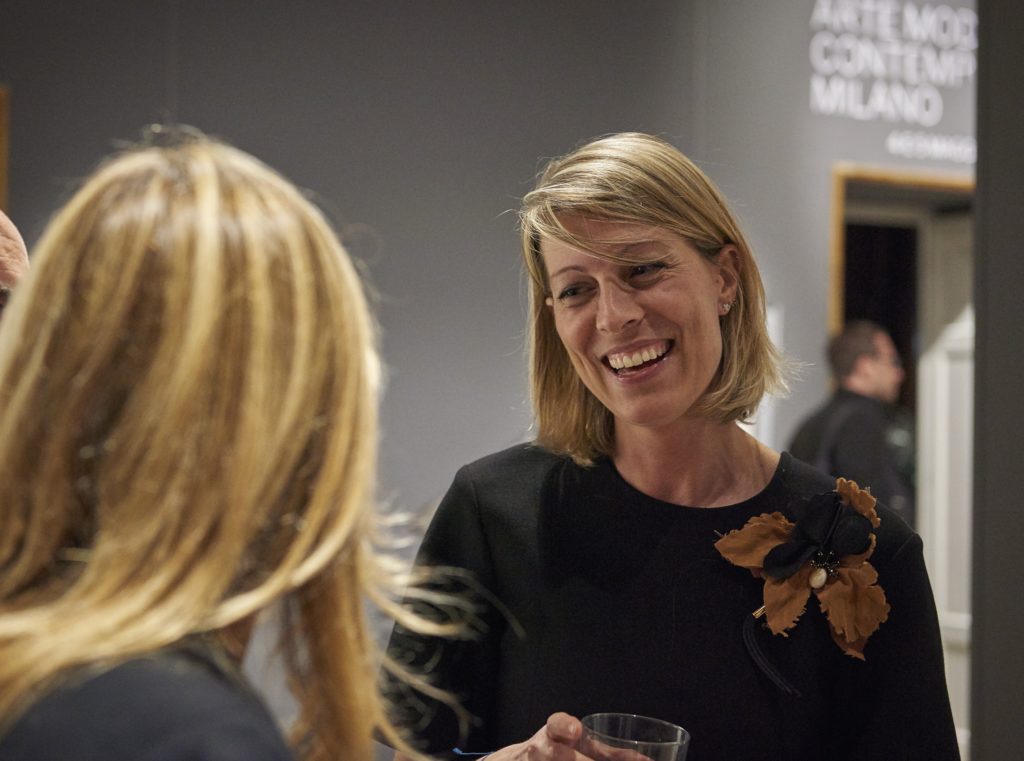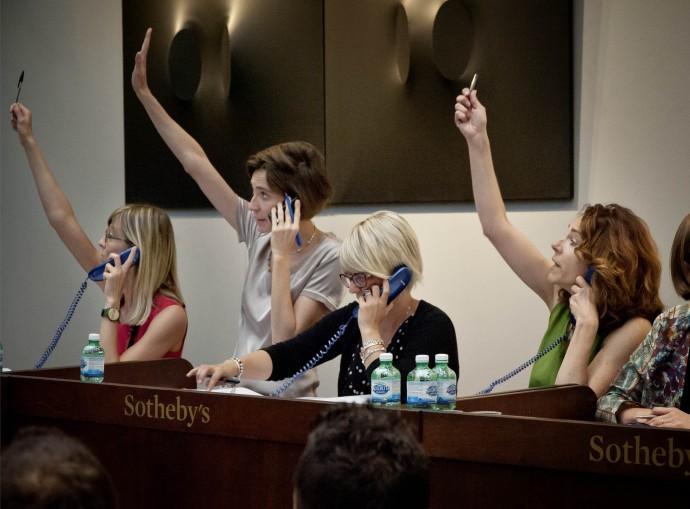The interview of ProfessioneArte.it
She is Marta Giani, Private Banker at Banca Fideuram.
Five questions to get a preview of the great art professionals, the daily challenges to be faced, the choices that have determined their path in the system and in the art market, the changes under the banner of digital and the advice for those who want to undertake the same career in collaboration with ProfessioneARTE.it.
Turning passion for works of art and for dialogue with those who collect into a job is the ability that distinguishes Marta Giani, Director and Head of Sale for Sotheby’s Italia.
Her task is not only to provide expertise on the thousands of works that are offered at the auction house every day, but also to create a dialogue with those who wish to develop or enhance a private art collection or a Corporate Art Collection, without forgetting the selection of the works, those real “hidden treasures” that reappear at auction.
In the interview Marta tells how, although the world of auction houses has changed considerably in the last 15 years, being dynamic and versatile, having the ability to adapt to changes in the sector by developing new skills is proving to be decisive for tackling with new impetus the recovery, also and above all in the name of digital…

Marta Giani is Director and Head of Sale for Sotheby’s Italia.
She gained significant experience in the field of contemporary art restoration and in 2004 began his collaboration with the historic Finarte auction house.
In 2006 he joined the Sotheby’s team in Milan, where he began his career as Junior Specialist for the department of Modern and Contemporary Art.
Always in close contact with colleagues from London, Paris and New York for assessments and international auctions, since 2012 she is Deputy Director and fulcrum of the Milanese department.
1. How did your journey in the art world begin?
My path started early, considering that I had already identified my field of interest long before I enrolled in the Faculty of Conservation of Cultural Heritage of Parma. During my university years I worked in the laboratory of a good restorer, because contact with works of art has always been a priority for me.
After graduation, although I still had no clear ideas, I had the opportunity to refine my dialectic working as a tour guide work at the temporary exhibitions of Palazzo Reale in Milan for about a year.
After a brief experience in an art gallery where I collaborated as a restorer and in organizing temporary exhibitions, I had the opportunity to join as a cataloguer of the team of the Contemporary Art department of a national auction house.
The job pace was very tight, but I was lucky enough to have a department manager and colleagues with whom I had a great time both from a human and a working point of view and from whom I learned more than I ever imagined.
This experience, two very intense years, led me to where I am still: to the department of Modern and Contemporary Art of Sotheby’s Italia, led by Raphaelle Blanga.
I started as a Junior Specialist and today, thanks to the growth that the company has allowed me to do, I am Head of Sales in Italy.
2. How would you describe your profession today?
Our task, as specialists, consists not only in providing the expertise on the works that are proposed to us and for which market evaluations are required, but also in giving our advice on how to develop or enhance a private collection or collection company.
I think it is essential in our profession to keep up to date: in this sense it is essential for us to attend public and private museums, cultural institutions, national and international fairs, art galleries and also artists studio.
Finally, I believe that in a sector that is increasingly competitive, research is equally decisive for the purpose of finding “treasures” to which no one has yet arrived or thought.

3. How has your profession changed over time?
Our world has changed significantly in the past 15 years, and I’m not just talking about contemporary art.
All the players in our sector have evolved, we first as the Auction House. We have gradually focused our attention on an ever higher market segment, as a consequence of the evolution of the tastes of collectors, who more frequently turn to us.
I think this trend depends in part on the cut that as a department we have agreed to give to our sales in Italy. Until a few years ago, it was unthinkable to hypothesize the sale of foreign artists of the caliber of Cy Twombly, Andy Warhol, Robert Rauschenberg, Josef Albers, Yayoi Kusama, among others, in Milan.
Today it is normal because the Milan auctions naturally fit into the international scene and enjoy the positive reflection of the results of the London and New York offices, with the advantage of maintaining a more exclusive character.
4. What impact is the digital having on your sector?
Digital is a topic that Sotheby’s is tackling with great enthusiasm and that acquires an increasingly marked role from season to season.
In a historical moment like the one we are experiencing, in which we are faced with unexpected difficulties deriving from a situation in which personal relationships have been drastically limited, the fact of being able to have high-tech digital content and auctions online of different categories is proving to be a trump card.
5. What would you suggest to someone who wants to pursue your career?
Our profession is among the most interesting that I can imagine for those with a passion for art. Without passion it is useless to undertake any career.
It is essential to be versatile and dynamic, but also and above all to want to continue studying and deepening. I find that university courses prepare students for the working world much better today than they did twenty years ago.
The best advice that can be given to those who want to make contemporary art their work environment is to always be available because you can also learn a lot from the experiences that may seem initially less encouraging.
Being familiar with at least one other language is now essential. A working experience abroad for what I have seen in the young students who have collaborated with our department as interns, is an excellent starting point.




